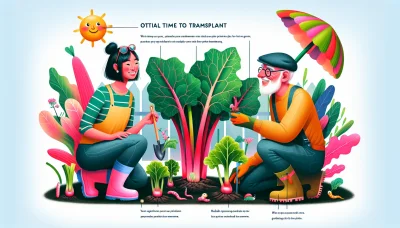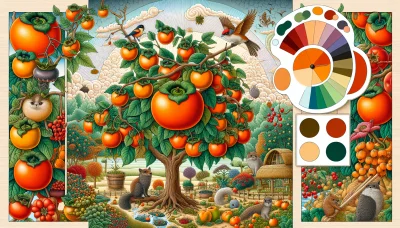How many strawberry plants per person Quiz
Test Your Knowledge
Question of
How Many Strawberry Plants Per Person?
Deciding on the appropriate number of strawberry plants to cultivate for personal or family consumption is a crucial aspect of home gardening. This decision impacts not only the yield of strawberries you can expect but also the space and care required to maintain a fruitful garden. In this discussion, we will explore various factors to consider when determining the right number of strawberry plants per person, ensuring that you have a bountiful harvest to enjoy fresh, juicy strawberries right from your backyard.
Understanding Strawberry Plant Yield
The yield of strawberry plants is influenced by a variety of factors that can either enhance or diminish the quantity and quality of the fruit produced. Key among these factors is the variety of the strawberry plant itself, as different cultivars have different yield potentials under the same growing conditions. Growing conditions play a crucial role, with aspects such as soil type, sunlight exposure, and temperature significantly affecting plant development and fruiting. Additionally, care practices including proper watering, fertilization, pest and disease management, and pruning can greatly impact the health of the strawberry plants and, consequently, their yield. Understanding and optimizing these factors can lead to abundant and fruitful strawberry harvests.
Calculating Strawberry Plants Per Person
- Determine the average strawberry consumption per person in your household.
- Research the average yield of a single strawberry plant. Remember, this can vary based on the variety and growing conditions.
- Calculate the total yield needed to satisfy the annual strawberry consumption for one person using the formula:
Total Yield Needed = Average Consumption Per Person / Yield Per Plant - Round up the number obtained in the previous step to the nearest whole number to find out the minimum number of strawberry plants needed per person.
- Consider planting a few extra plants to account for potential losses due to pests, diseases, or other unforeseen circumstances.
- Repeat the calculation for each person in your household to determine the total number of strawberry plants needed.
Recommended Number of Strawberry Plants
When planning a garden, it's important to know how many strawberry plants to grow to meet your needs. For fresh consumption, the general recommendation is to plant 5-6 strawberry plants per person. This should provide a sufficient supply of strawberries to enjoy throughout the growing season. If you're interested in preserving strawberries by freezing, making jams, or canning, you might want to consider planting 10-12 plants per person. This will ensure you have enough strawberries to enjoy fresh and to preserve for year-round enjoyment.
Maximizing Your Strawberry Harvest
To increase the yield of your strawberry plants, it's essential to focus on several key areas: proper planting techniques, fertilization, and pest control. Begin by planting your strawberries in a location that receives full sunlight and has well-drained soil to prevent root rot. Space the plants about 18 inches apart to ensure they have enough room to grow and spread. Regular watering is crucial, especially during the dry periods, but avoid overwatering as strawberries are sensitive to excessive moisture.
Fertilization plays a vital role in the health and productivity of your strawberry plants. Use a balanced fertilizer to provide the necessary nutrients and consider adding compost or manure to enrich the soil. However, be cautious with nitrogen-rich fertilizers, as too much nitrogen can lead to lush foliage at the expense of fruit production.
Pest control is another critical aspect of maximizing your strawberry harvest. Monitor your plants regularly for signs of pests or disease and take immediate action to mitigate any issues. Using natural predators, like ladybugs for aphids, can be an effective and environmentally friendly way to control pests. Additionally, ensure your garden is clean and free of debris to reduce the risk of disease and pests.
By following these tips and strategies, you can enhance the yield and quality of your strawberry harvest, enjoying delicious and healthy fruits from your garden.
Common Mistakes to Avoid
- Planting at the Wrong Time: Strawberries should be planted early in the spring as soon as the soil is workable. Avoid planting in hot, dry weather to give plants a good start.
- Choosing the Wrong Location: Strawberries need full sun, at least 6-8 hours a day. Avoid shady areas to ensure your plants receive enough light for growth.
- Ignoring Soil Requirements: Strawberries prefer well-drained, sandy loam soil with a pH between 5.5 and 6.8. Amend your soil accordingly and avoid heavy, poorly drained soils.
- Planting Too Deep or Too Shallow: The crown of the strawberry plant should be at the soil surface, with the roots spread out below. Planting too deep can cause rot, and too shallow can dry out the roots.
- Overcrowding Plants: Strawberries need space to grow. Plant them about 18 inches apart to allow for runners and adequate air circulation, which helps prevent disease.
- Neglecting Water Needs: Strawberries require consistent moisture, especially during fruit bearing. Water regularly, but avoid overwatering which can lead to root rot.
- Forgetting to Mulch: Mulching helps retain soil moisture, control weeds, and protect roots. Pine needles, straw, or shredded leaves are good options for strawberries.
- Ignoring Pests and Diseases: Keep an eye out for common strawberry pests and diseases. Use appropriate organic or chemical controls as needed, and practice crop rotation to prevent issues.
Conclusion: Planning Your Strawberry Garden
Planning your strawberry garden is a crucial step towards achieving a fruitful harvest. It involves understanding the space requirements, growth habits, and yield potential of strawberry plants. By calculating the right number of plants per person, gardeners can tailor their garden to meet their specific goals, whether for personal consumption, sharing with neighbors, or even for small-scale commercial purposes. A well-planned strawberry garden not only maximizes the use of space but also ensures that each plant receives the care it needs to thrive, leading to a bountiful harvest that can be enjoyed throughout the season.












